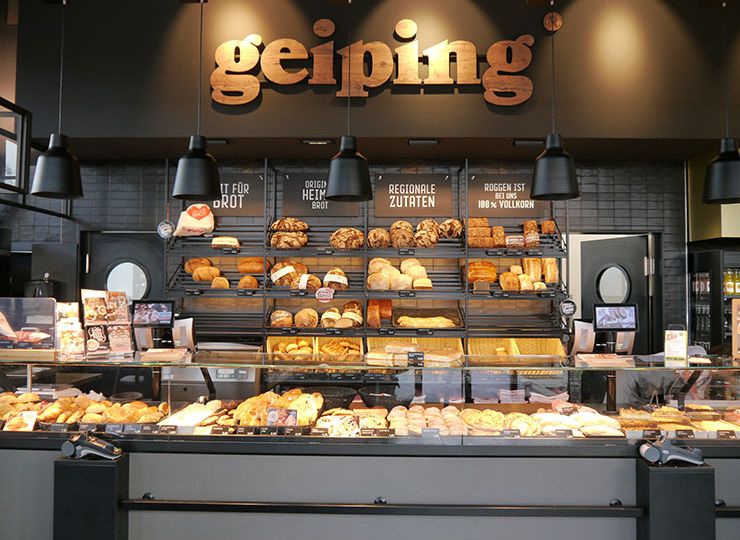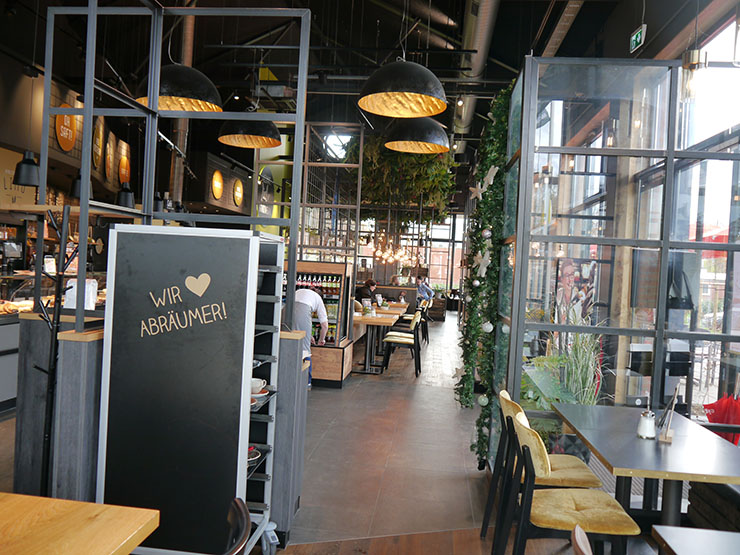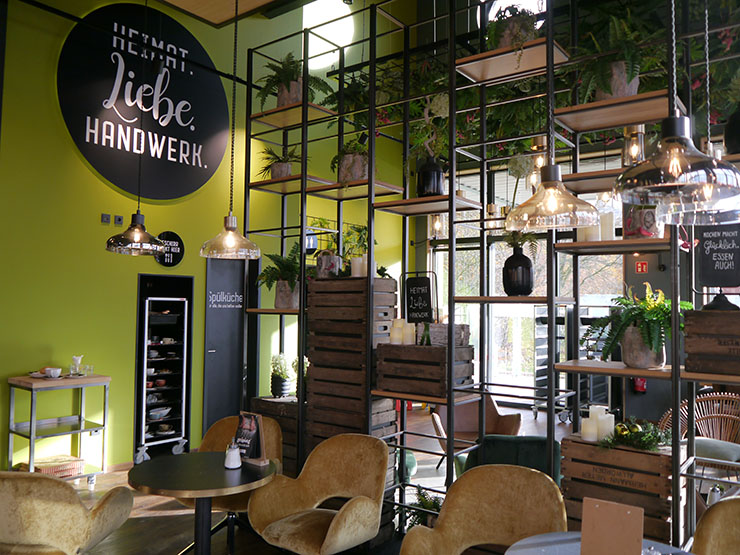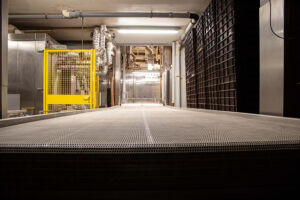
The more accurately baked products sales can be forecast in advance, the lower are the returns losses. The Geiping Bakery relies on self-learning software to push down the proportion of returns, while also discovering sales opportunities that remain unused.



The Geiping Bakery’s latest flagship store opened in the summer of 2019
Much has changed since Geiping started using self-learning software. The proportion of returns fell by 2 – 3 percentage points, but much more importantly: the software helps cope with the increasing complexity with 220 different baked products, because data are decided in the order management system, not by gut instinct. Greater clarity has been achieved in and about the product range. However, it is hard to put a figure to the exact financial benefit.
Data discipline is one condition to allow the analysis tool to function, and a centrally organized ordering system is another. No obstacle for Geiping. Volker Hollenberg, who as Sales Manager is the “Numbers Master” in the company, and the interface between sales and the bakery, says “We centralized our orders management four years ago,” and he reports that “We switched over on foot at that time, still without any IT Controlling.” He says they recognized that it was possible to operate with considerably greater accuracy from the center, with IT backing, than from the branches. It was a real cultural change, and needed considerable tact. After all, they didn’t want to give those responsible in the branches the feeling that they were being virtually “disenfranchised”, and so they have retained an influence on ordering. The switchover yielded another benefit: it was possible to save ½ an hour of working time per branch, i.e. 23 hours/day with 46 locations.
For a very few products, Geiping’s production unit needs a 2-day lead-in time. They quickly began searching for suitable software to solve the orders problem in the best possible way. “We quickly gave up the idea that a fully-automatic forecasting tool exists.” Volker Hollenberg is certain that this is not practicable, at least not in the current situation. FoodTracks works differently. “It’s a recommendation tool, virtually an intermediate stage, that assists us in the ordering process but does not automate orders.”
What is FoodTracks?
FoodTracks is a cloud-based, intelligent controlling solution for bakeries. The Geiping Bakery has used the “Turnover & Customers” module for branch controlling, and the “Branch Tuning” module for ordering, since March 2019. “Branch Tuning” indicates the branch-article-weekday combinations for which the order should either be reduced or increased. The core of the tool is a ranking in EUR of the biggest returns losses and the biggest sales revenue opportunities. The “Sales Revenue Opportunity” is a novel key figure for which the algorithm estimates, for zero returns, how many more articles could have been sold. The number can be multiplied by the selling price, and the missing goods are displayed as a value in EUR.
The Geiping Bakery
The W. Geiping GmbH & Co KG bakery, with lead manager Michael Geiping in the fourth generation of the family, has operated at the company’s headquarters in Lüdingshausen near Dortmund, Germany, since 1998. With around 500 employees, the company produces up to 220 different baked products, seven days a week. Bread and snacks (topped bread rolls, flatbreads or flutes etc.), which are prepared centrally in our own snack kitchen, are among the growth drivers just as much as confectionery and cakes. Of the total of 47 branches (in a radius of around 45 km), 23 are bakery-cafés, and another five are operated as food service locations, including with a salad bar, fresh pizzas prepared on the spot, and a Sunday buffet breakfast. In addition to its own branches, Geiping supplies B2B customers such as hospitals, canteens and restaurants. The company generates around EUR 25 to 30 million per year.
Handling returns
In addition to the actual branches, Geiping operates four previous day shops. The majority of the goods from the branches are sold at half-price on the following day. The bakery then makes anything still remaining available to community food outlets. Whatever these do not take is used by a local farmer as animal feed.

The fully-automatic multi-deck oven is emptied via this outfeed belt

Four of a total of eight Miwe rack ovens

The dispatch building, where baked products for the branches are order-picked with support from an IT-controlled distribution system
How Geiping works using the analysis tool
In the first place, FoodTracks (or more precisely the “Branch Tuning” module) actively informs staff in Central Customer Service about conspicuous issues. “Actively” means a daily E-mail tells them which articles in which branches have caused which amount of returns loss on the previous day or, to put it the other way around, where a turnover opportunity was missed, and for which articles. Recommendations about what that means for future orders are also provided at the same time. For example, such a recommendation may say: “Please check croissants in branch XY next Sunday.” In the Geiping bakery, FoodTracks obtains all the data it needs for its analysis from Goecom’s Marvin merchandise management system.
Secondly, the tool creates branch rankings sorted by sales revenue in EUR. From these rankings, staff in the center select the five Top and Flop branches on each occasion (i.e. those with the biggest returns), and evaluate them. What was the trend in the branch in the past six weeks? What was it on each weekday, for each product group and for each article? That all costs time. Two employees and two trainees each work with FoodTracks for two hours daily. Because the system cannot take all the effects into account, manual substantive checking is also included. For example: a branch could drop down in ranking because a building site is deterring customers from making purchases. The weather also (still) does not enter the algorithm. According to Hollenberg, an If-Then relationship between weather forecast and purchasing behavior is as complicated as it is location-dependent. Weather data are included in the Food-Tracks graphics, however, as information. Finally, after an assessment and substantive check, the center prepares the order for each branch for the corresponding weekday. It is forwarded to the branches once a week (on Thursdays) for a final check-up, and is adjusted as necessary.
The next steps
The Geiping Bakery played a major part in developing “Branch Tuning”. Volker Hollenberg reports that “We prepared a catalog of requirements stating, in our opinion, how and which data such a controlling solution should deliver. FoodTracks developed it, we improved it, FoodTracks developed it and we improved it. That went on for weeks until a tangible result existed.” He thinks the next step lies in developing ordering recommendations expressed in real figures. Moreover: “One of our aims would be to enable staff deployment planning to be carried out based on expected turnovers. So, in a first step, we need turnover forecasts.” That’s exactly what the software developer is currently working on, and is sending initial test programs which, according to Hollenberg, are already quite close to reality.


